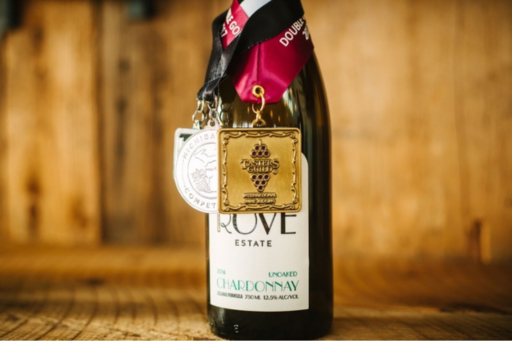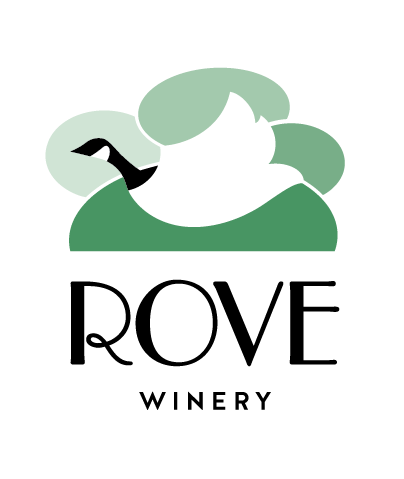
Chardonnay wine is synonymous with “white wine.” Go to any wine bar, and when someone orders a glass of “white,” they usually mean Chardonnay. It’s a wine that ranges in style from lean and sparkling to rich and creamy – making it versatile in flavors approved by any palate.
So let’s pour a glass and learn more about Chardonnay.
Chardonnay Wine’s Origin & History
The Chardonnay grape originates from a cross between the Pinot Noir and Gouais Blanc grapes. And it’s the most widely grown white grape varietal in the world.
The history of Chardonnay goes back to the Middle Ages. It first originated in a small village in the Burgundy region of France called (surprise!) “Chardonnay.” The original meaning of Chardonnay was “place of thistles” or “thistle-covered place.” French Catholic monks began spreading the grape and wine beyond the Burgundy region, where its popularity grew into the world’s best white wine.
But big business almost toppled that popularity in the 1980s. For a period, Chardonnay was considered a wine only drunk by “ignorant” wine drinkers. Much of the Chardonnay wine produced during that period was overly sugary, having lost the buttery, creamy flavor to mass-production.
Wineries saved Chardonnay by experimenting with the white grape to produce flavorful Chardonnays again – making it the most popular white wine once more.
Chardonnay Wine’s Characteristics
Chardonnay is a well-loved white wine with a wide range of flavors and aromas – but this all depends on the climate it’s grown in and whether it's oaked or unoaked. The beauty of Chardonnay is it can express the flavors of the land and showcase the winemaker’s style. So it can be crisp and refreshing to velvety and rich.
When drinking a glass of Chardonnay wine, you’ll find a dry, medium- body wine with no to low tannins and medium acidity.
Color: A Chardonnay’s color ranges from pale (unoaked) to deep gold (oaked).
Flavors: A Chardonnay’s flavors depend both on climate and whether it is oaked. The standard flavors are apple, peach, pear, melon, starfruit, and pineapple.
Oaked Chardonnay will have additional flavors of vanilla, baking spices, or butter along with tropical fruits (think pineapples and mangos) to green apples and citrus. The taste will be rich, full-bodied, and smooth.
Unoaked Chardonnay ranges in flavor from citrus and green apple to overripe peach and canned pineapple. It’s lively (like Pinot Grigio and Sauvignon Blanc) but without the “green” flavors. The taste will be more minerally and dryer than an oaked Chardonnay.
Aroma: Green apple is the characteristic aroma of Chardonnay wine, but other aromas depend on the growing climate of the grapes. Cooler climates tend to produce aromas of citrus, pear, and tropical fruits. While warmer climates also have tropical fruits but may contain scents of spice or caramel.
If you’re drinking an oaked Chardonnay, you’ll also detect notes of vanilla, honey, and butter.
Aging: Most unoaked Chardonnays are meant to be drunk young, but there are several that can be aged. For oaked Chardonnay, it can be aged 5-10 years.
Chardonnay Wine Food Pairings
When serving Chardonnay, there’s no need to decant before serving. Just make sure the bottle is at 45-55° (this is a little below room temperature).
When it comes to food pairings for Chardonnay, there are a lot of choices depending on if you’re drinking a bottle of oaked or unoaked wine. Chardonnay wine is versatile handling lighter dishes like fish and lobster to heartier dishes like macaroni & cheese! But overall, keep the spice flavor low and instead accentuate the Chardonnay with creamy, buttery flavors and textures.
An oaked Chardonnay calls for bolder food pairings like crab cakes, linguine & clams, halibut, and pork tenderloin with apples. For a vegetarian option, pick rich or starchy vegetables like corn, pumpkin, squash, or mushrooms.
Overall, oaked Chardonnay pairs well with intense dishes like smoked fish or guacamole. But you can also go simple (think seared scallops) to let the flavors of the wine shine.
Unoaked Chardonnay is a leaner white and has a crisp, delicate, mineral flavor, which calls for pairing with crisp, delicate foods. So think raw seafood (like oysters or sushi), sauteed fish, chicken piccata, or veggie risotto.
If you’d like more help with wine and food pairing, check out our guides for winter wines, fall wines, and summer wines. We also have a great Food and Wine Pairing Rules 101 to help deepen your understanding of wine and food!
Grab a bottle (or 2!) of Rove Estate’s Chardonnay!
At Rove Estate, we bottle both oaked and unoaked Chardonnay – and they’re absolutely delicious!
Our 2021 Reserve Oaked Chardonnay is tropical and creamy, tasting of starfruit and pineapple with a touch of hazelnut.
The 2021 Chardonnay is aged in stainless steel giving off clean, fresh aromas of white peach, honeydew melon, and elderflower. The palate is silky and generous with notes of pineapple, golden delicious apples, and lemon yogurt. The fruit flavors and refreshing acidity make for an elegant, well-balanced wine.
If you’re a Rove Nation Wine Club member, you have access to our 2018 Reserve Oaked Chardonnay. This wine has aromas of fresh apples, lemon, and warm vanilla spice. The palate expresses flavors of honeydew melon, ripe yellow apple, and finishes with a touch of hazelnut.
Want to learn about more wine? Check out our other essential wine guides on Pinot Noir, Riesling, and Rosé. Slainte!



